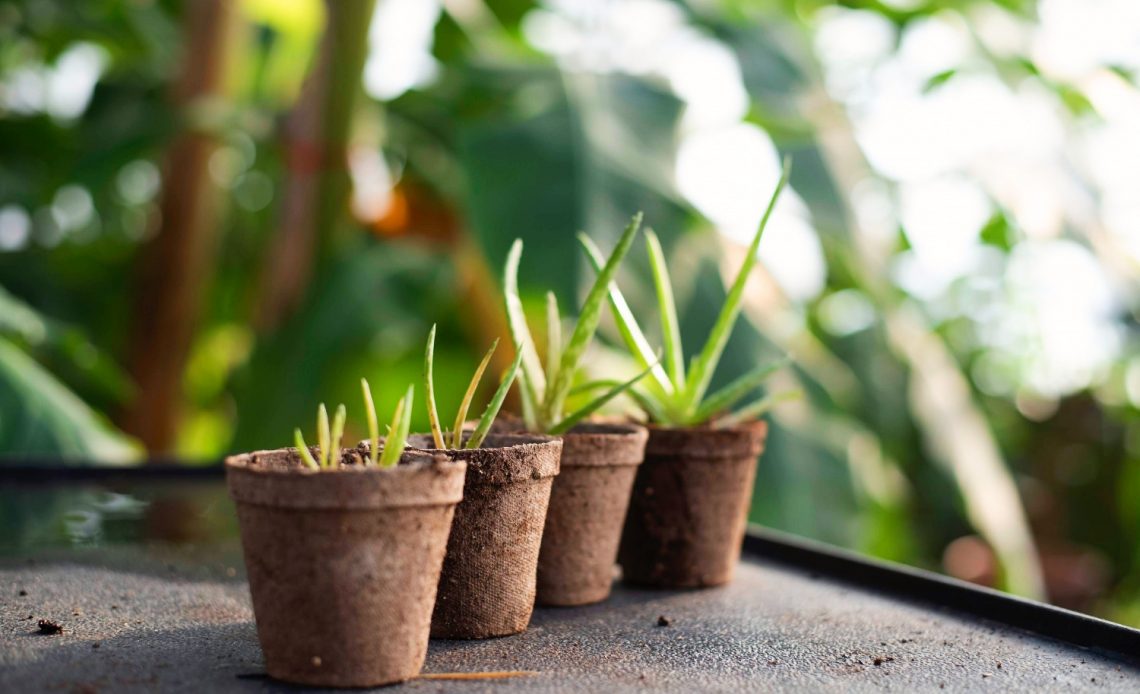

We’re here to help! Wild Yards is a completely free website that is 100% dedicated to helping you create a wildlife-friendly, sustainable yard. Read more
WildYards is reader-supported. When you buy a product through a link on our site, we may earn a comission. Every product is independently selected by our (obsessive) editors and our reviews are unbiased and objective. Read more about our mission or our privacy policy.
Starting plants from seeds can be so rewarding. It’s a great way to get a jumpstart on the growing season, too. By sowing your seeds indoors, you can enjoy watching them develop, even before the last frost of spring. If you love starting your fruits and veggies from seeds, then chances are, you’ve come across peat pots at some point. You may even have used them to plant in a time or two. But how do peat pots compare to plastic seed pots, and what benefits do they have to offer that makes them worth using?
Peat pots are biodegradable pots made of peat moss and other plant-based materials. Transplanting seedlings grown in peat pots is easy — pots can be torn to accommodate growing roots, and the materials break down into the soil over time.
What are peat pots?
Before we talk about why peat pots are so great, it would be helpful to first understand just what they are! Peat pots are planters created from peat moss, as well as other plant materials. Most peat pots are designed for seedlings, but they come in a variety of shapes and sizes, with some peat pots large enough to grow dwarf trees.
Peat seed pots are a green alternative to traditional plastic pots. Plastic seed pots are reusable to a certain extent if you’re careful with them during transplanting. But the plastic used to make seed pots is usually quite brittle and becomes more so over time. Unfortunately, these pots are not biodegradable, so when they break, they wind up in landfills.
Because peat seed pots are comprised of plant materials, this limits their reusability. You can only use them once. But, the good news is, the plant fibers they’re made up of break down, adding nutrients and fiber to the soil, which can actually improve its structure greatly.
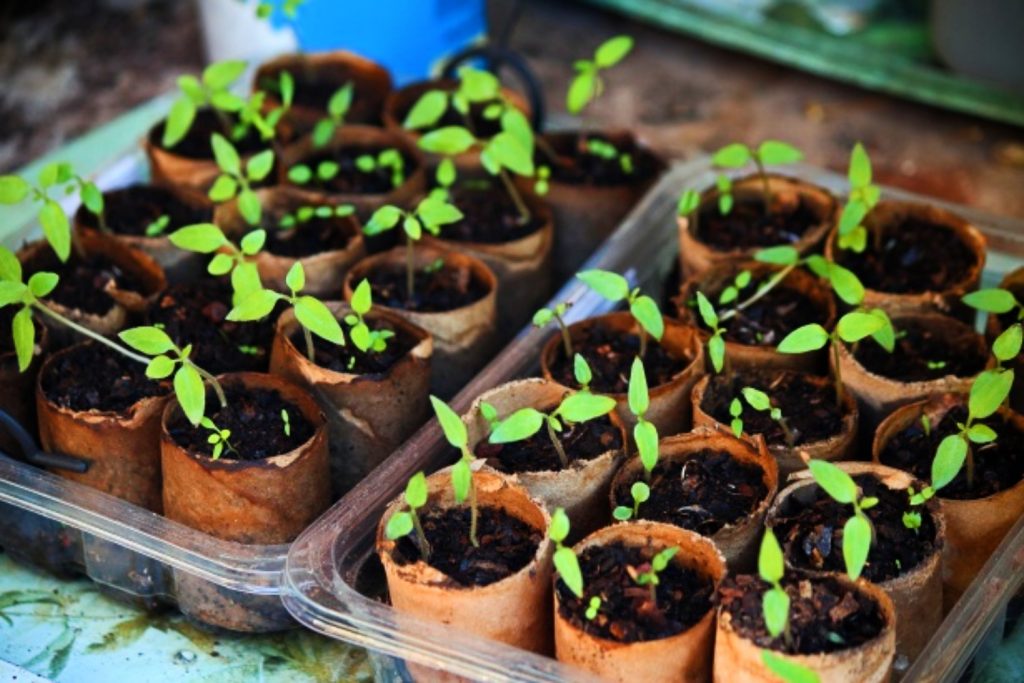
How are peat pots made?
Peat pots are usually made with peat moss, which is a layer of dead sphagnum moss harvested from bogs, swamps, and other wetland areas. Peat moss is a dry, fluffy, fibrous material often spread as mulch and to line hanging baskets. This moss can be used as a loose substrate for growing plants. Its porous nature means it retains moisture easily, while also allowing excess water to drain off quickly.
To make peat pots, peat moss is harvested, dried, and soaked to create a fibrous paste, then compressed into molds to form square or round pots. Of course, other materials can be used to make seed pots, too, including coconut coir and wood fiber. Even though some biodegradable pots are made of other plant materials, they’re usually all referred to as “peat pots”.
Peat pots aren’t quite as stable as plastic pots. If you were to leave a peat pot out in the weather or in a humid storage area, it would soon begin to decompose. It’s important to keep peat pots in an airtight bag or container to preserve them until you’re ready to use them. This also means it’s important to plant your seedlings as soon as they’re ready to be transplanted, to prevent the pots from disintegrating around them before they’re in the ground.
Which plants can be started in peat pots?
You can use peat pots to start just about any plant. Whether you want to grow morning glory from seeds or start new thyme plants from cuttings, peat pots make it easy. Many gardeners choose to start their crops in these biodegradable pots. Here are just a few of the fruits and vegetables that can be started in peat pots.
- Okra
- Peppers
- Cucumbers
- Blueberries
- Squash
- Carrots
- Turnips
- Raspberries
- Broccoli
- Onions
- Garlic
- Strawberries
- Tomatoes
- Watermelon
- Cabbage
- Blackberries
- Cauliflower
- Radishes
- Eggplant
Because most fruits and vegetables have shallower root systems than, say, trees, they don’t need much space to start growing. Small peat pots provide these plants with enough room for their roots to form. And, when the plants are ready to go in the ground, the peat pots can easily be broken up to help them decompose into the soil, which helps improve soil structure over time.
Although peat pots are great for starting seeds, they do have their limitations. Plants should be transplanted when they’ve matured enough, otherwise, they may become root bound and die. Additionally, many shrub and tree seedlings produce long taproots. Peat pots come in a variety of shapes and sizes, and although deep peat pots provide trees and shrubs with enough space to get started, the plants may suffocate if they aren’t transplanted in time.
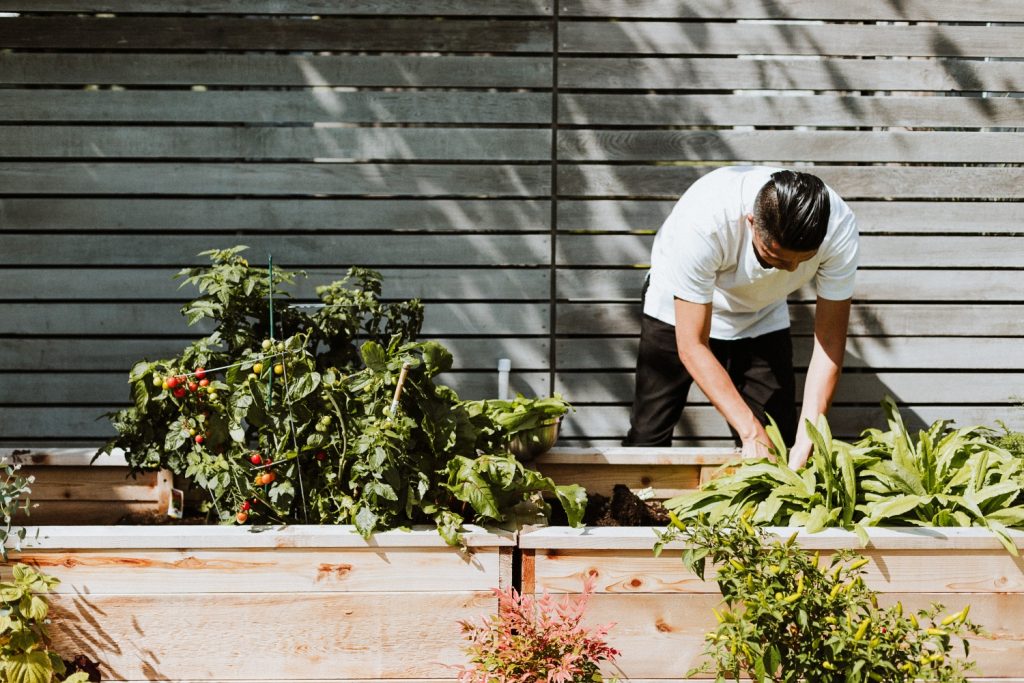
What are the different types of peat pots?
Not all peat pots are created equal. There are a variety of peat pots available to help you meet all of your gardening needs. It may be worth shopping around at feed stores, hardware stores, and garden centers to discover which options are available to you locally. But, in general, there are three types of peat pots you can use.
Individual peat pots
You can purchase individual square or round peat pots, that typically range in size from 2-inch seedling pots to larger pots measuring around 4 inches in diameter. Larger peat pots are available, as well, and can measure around 12 inches in diameter.
Peat pots are available in a broad range of sizes to accommodate different seedlings. When choosing individual peat pots, it’s important to keep the plant in mind. If you intend to plant an acorn, for instance, you’ll need a deeper pot than you would for a pumpkin seedling because young oak trees have much longer roots than gourds.
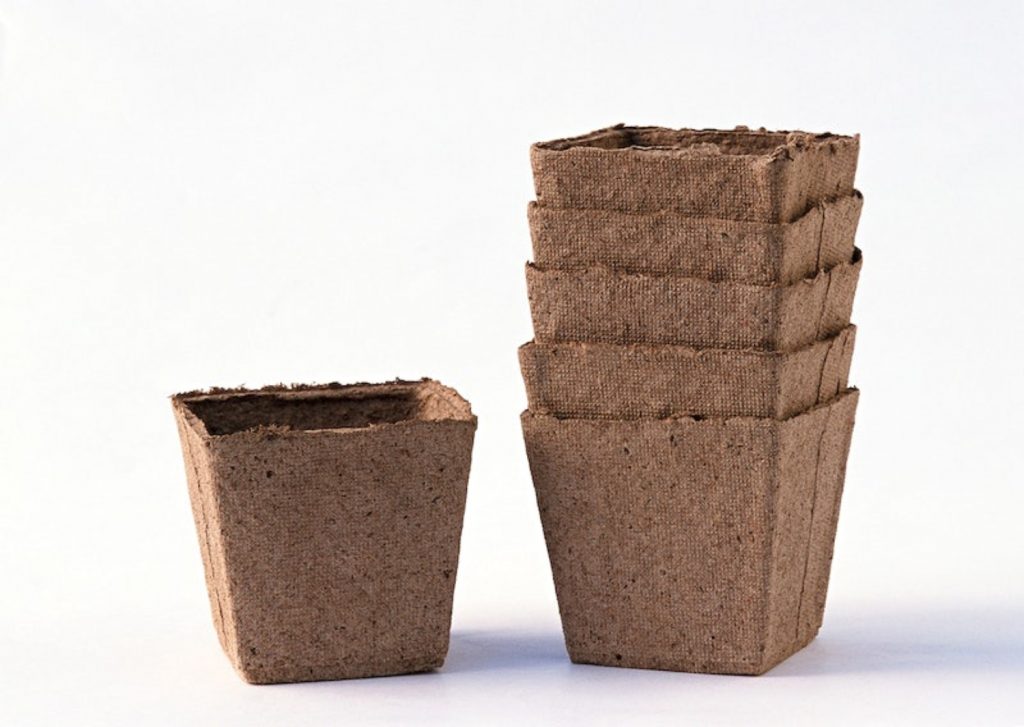
Peat seedling trays
Peat seedling trays, or peat strips, are comprised of small cells which makes them ideal for starting crops. These peat pots allow you to sow a large number of seeds quickly, and care for them easily since they’re all attached. You can move the tray in or out of the sun to accommodate your seedlings’ light requirements. And when it’s time to move your seedlings out into the garden, you can easily tear the cells away from the tray to plant them.
Peat seedling trays are perfect if you’re planting a lot of something, whether that something is a vegetable, an herb, or even a wildflower. Because peat pots have to stay moist, you may find you need to place the tray on a baking sheet for added support so you can move the seedlings around without destroying the pots.
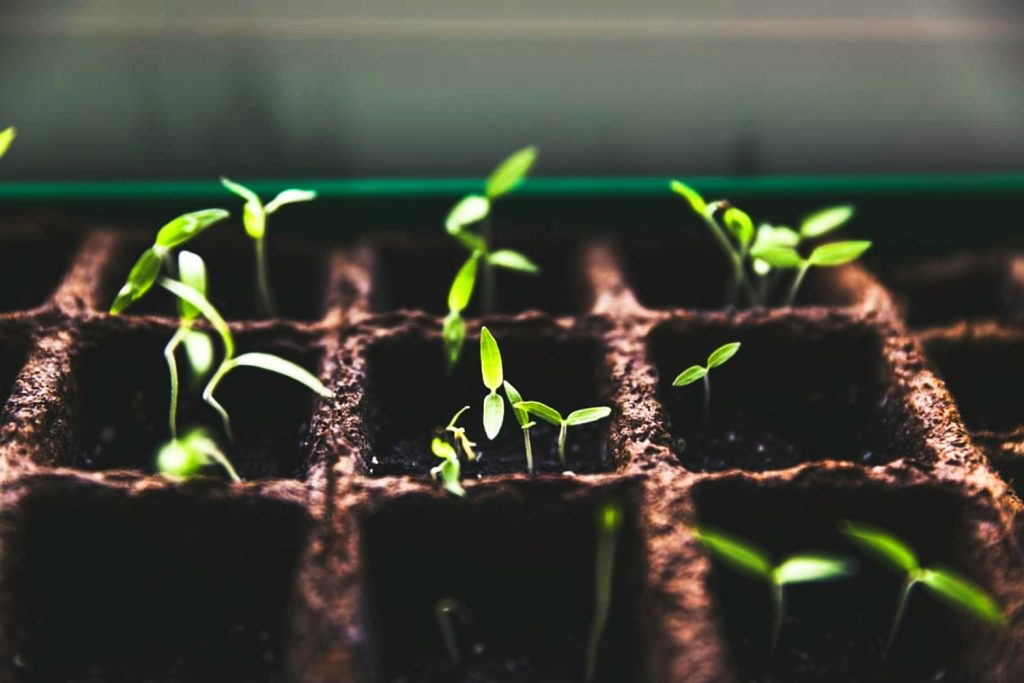
Peat pellets
Also known as moss pellets or jiffy pellets, peat pellets are small, compressed discs held together with a biodegradable mesh. Pellets can be placed in a plastic tray and, once moistened, they will expand to produce individual cylinders which you can plant in. Peat pellets act not only as a vessel for seeds but also as a growing medium. Once the plants are mature enough to be planted outside, the peat pellet can be placed in the hole as is.
Peat pellets make transplanting a breeze. All you have to do is place the pellet in the soil, and it will gradually incorporate into the substrate over time. Your seedlings will be able to continue growing without skipping a beat. Peat pellets are fantastic for growing certain plants that dislike having their roots disturbed, including poppies, sweet peas, and lupines.
How to start growing with peat pots
There are many advantages to using peat pots as opposed to traditional plastic ones — and we’ll take a more in-depth look at these advantages in a little bit. But first, let’s find out how to use peat pots for starting seeds.
Fill the pots with soil
Obviously, if you want to plant in peat pots, the first thing you’ll need to do is fill them with soil. You can fill the peat pots with any soil, from sand to clay to loam. The most important thing to consider is the plant you intend to grow. Most plants, like mint, beans, blueberries, and leafy green vegetables grow best in loamy soils or traditional potting mixes. But drought-tolerant plants, like lavender and sage, need sandier soils. And certain wildflowers, like black-eyed Susan and blanket flowers, are tolerant of clay-rich soils.
Before planting anything in a peat pot, double-check the plant’s soil requirements. Choose soil that has the right texture, the right amount of organic materials, and the right pH for the seeds you intend to sow.
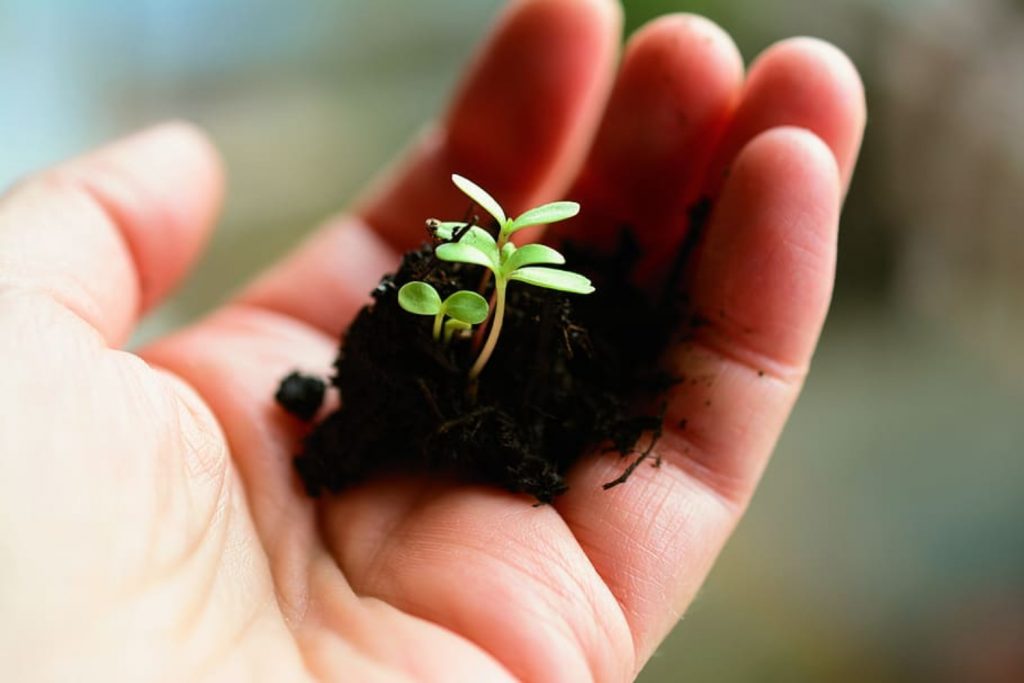
Soak the peat pots
Once the peat pots have been filled with the appropriate soil, set them in a bucket or baking tray and add water. It’s important to allow the peat pots to absorb some moisture, not only to keep the soil hydrated, but also to make the pots more pliable, and to kickstart the biodegrading process. The pots should be kept damp from the time you sow your seeds to the time they’re ready to be transplanted into the garden. Once your seeds are planted, be sure to keep them in full to indirect sunlight, depending on their unique light requirements. Meeting all of your seeds’ growing conditions will help them sprout quickly.
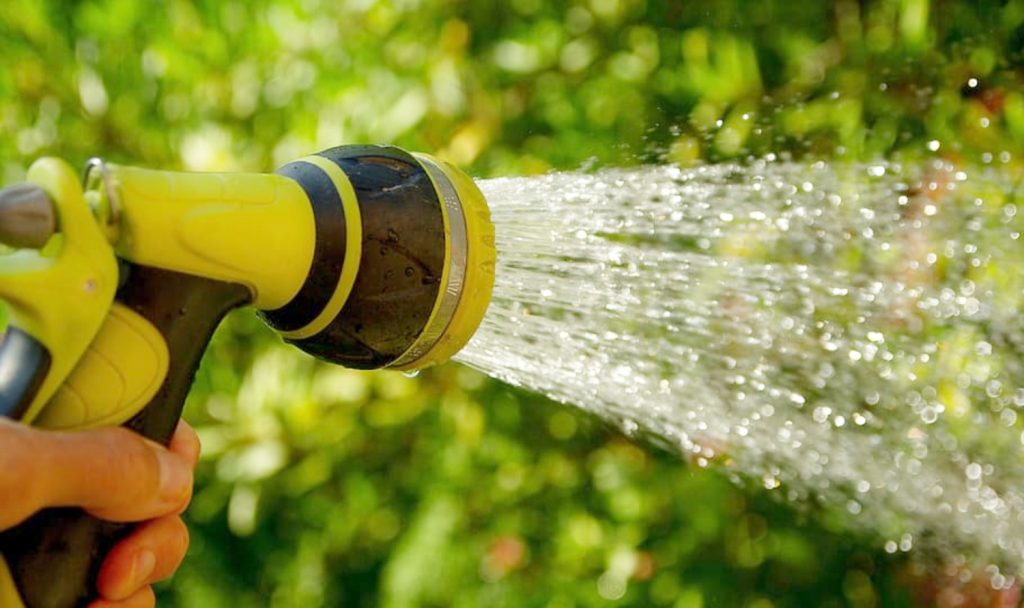
Get ready for transplanting
Once your seedlings have developed 2 to 4 sets of true leaves, they’re ready to be moved to the garden, or a bigger pot. It’s important to transplant your seedlings as soon as possible to prevent them from becoming root bound. There are several ways to plant seedlings that have been started in peat pots.
- Remove the bottom of the pot: This method works well for trees and shrubs, which are larger plants with long taproots. Leaving the sides of the pot intact encourages the plants to produce deeper, stronger root systems.
- Score the sides of the pot: Another way to transplant seedlings growing in peat seed pots is to remove the bottom and score the sides of the pot from the bottom about a third of the way up the pot. This frees up the plant’s roots and helps the pot break down over time. This method works well for fruits and vegetables, as well as ornamental plants.
- Remove the pot entirely: If your seedling’s soil is so compacted that the clump of dirt can be removed independently of the pot, then simply score the pot with a knife, remove it from the base of the plant, and add the port to your compost bin as brown matter. This method can work for any plant, fruit, vegetable, ornamental, or otherwise, as long as the soil has enough structure to prevent it from falling away during transplanting.
If you plant the seedling with the pot still around it, be sure the pot itself is covered with soil. Leaving the rim of the pot above soil level can trap moisture and lead to fungal infections. If the peat pot sticks out above the plant’s root collar, plant the seedling at soil level, and use a knife to trim away any excess. Be sure to water your seedlings well in the days following transplanting. Keeping the soil moist will not only help the plants get established more quickly but will also encourage the peat pot to decompose.
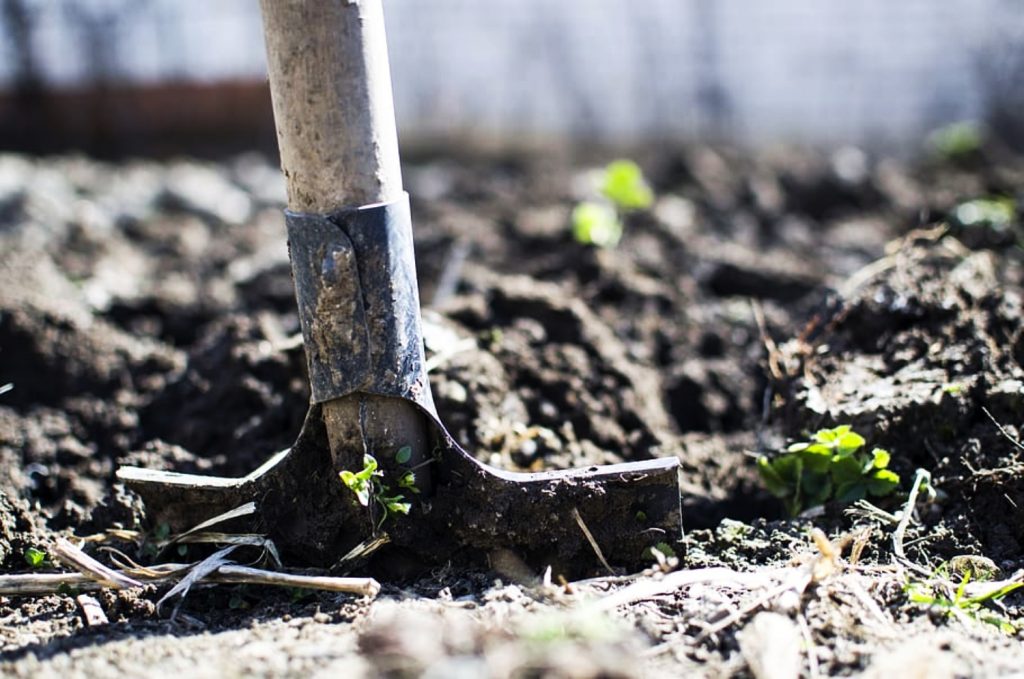
What are the benefits of using peat pots?
Obviously, the biggest advantage to using peat pots is that they’re biodegradable. For many gardeners, that’s reason enough to use them. But peat pots have other benefits to offer as well. Let’s take a look at some now.
Peat pots are porous
Plastic containers don’t breathe. But peat pots do, thanks to their porous nature. Peat pots offer plants great aeration, and they can expand and contract, providing seedlings with some wiggle room as they grow. Because they’re porous, they also retain water more efficiently. Keeping seeds hydrated is critical to successful germination. Peat pods allow the soil to stay uniformly moist, creating an ideal environment for sprouting.
Peat pots are easy to use
Have you ever tried to wriggle a seedling out of a plastic pot without breaking the plastic pot so you can reuse it later? It’s not always as easy as it sounds. Plastic isn’t very elastic. It’s brittle, and it can break. Once a plastic pot cracks, all you can do is throw it out. Peat seed pots are also generally not reusable. But because they’re biodegradable, whether you leave them around your seeds or toss them into the compost bin before planting, you can be confident they won’t add dangerous chemicals to the soil.
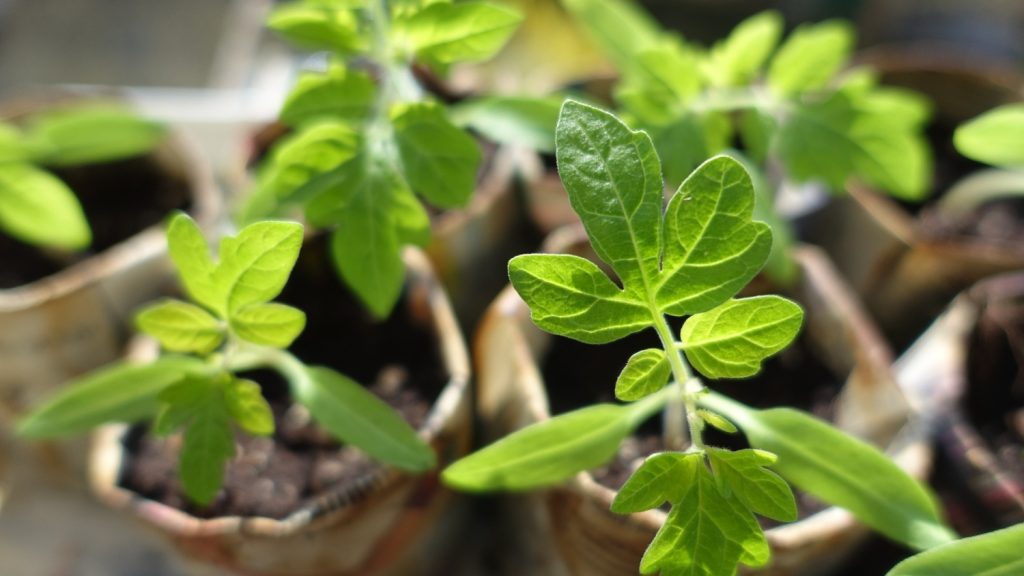
Peat pots are cost-effective
Whether you purchase individual pots, seedling trays, or peat pellets, these green alternatives to traditional plastic pots are cost-effective. Peat pots are often comparable in price to plastic pots. So if you want to grow your own fruits and veggies from seeds, and you want to do so as organically as possible, peat pots are a viable alternative.
Peat pots reduce the risk of transplant shock
Moving plants from inflexible plastic containers means you have to jostle them around a bit to break them free. This can result in damage to the foliage and roots. An injured plant can have a harder time getting established after transplanting and may develop shock as a result. But because peat pots can be broken apart to allow roots to continue growing, they greatly reduce the risk of transplant shock.
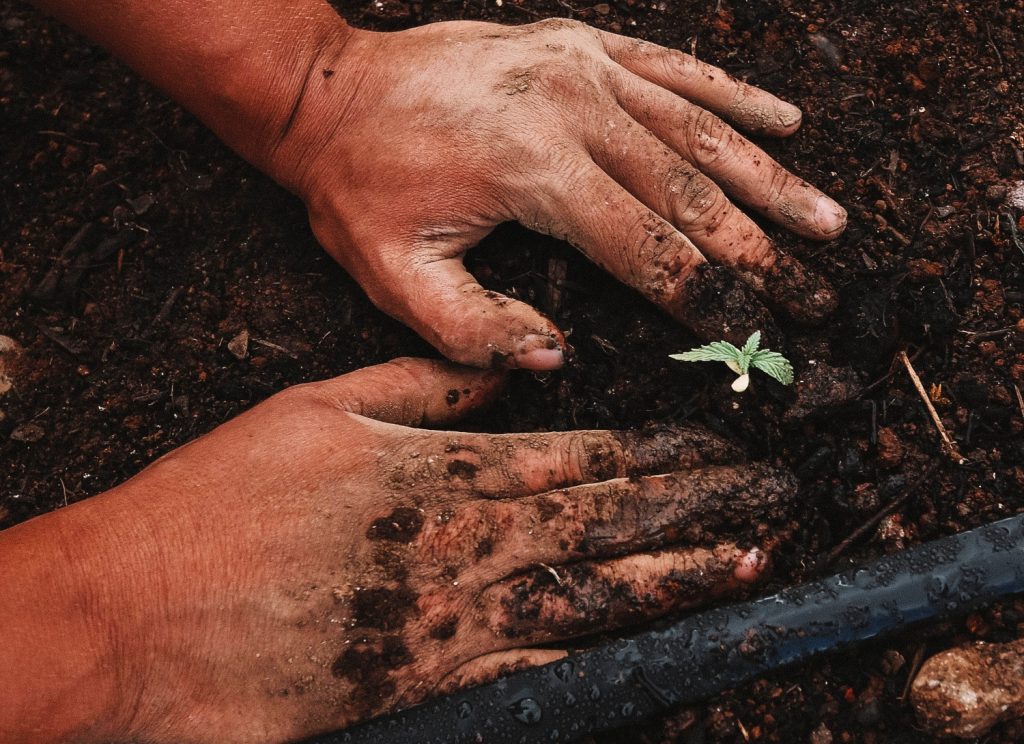
Tips for using peat pots successfully
Growing in peat pots isn’t complicated, but there are a few things you need to keep in mind to maximize your chances of success.
First, make sure the peat pots stay moist. Presoak the pots so that they’re damp before sowing seeds. Peat pots should feel damp to the touch to keep the seedling’s soil moist as they grow. If the peat dries out, then it may begin to leech water from the soil, depriving the seedlings of precious moisture.
Second, when your seedlings are ready to be transplanted, move them right away. Dig holes for the seedlings that are twice as wide and as deep as the plant’s root system. Loose soil helps plants get established more quickly. Be careful not to damage the roots during transplanting, as this can contribute to transplant shock. If the temperatures outside are unsuitable for your seedlings, then transplant them to larger pots until they can be moved to their permanent home.
Finally, keep the pots in a bright location. Peat pots must stay moist, but damp soil can’t warm up without some light, and seeds need warmth to germinate. Keep your peat pots in a warm sunny spot. You can spread plastic wrap over the top of the pots to create a greenhouse effect if necessary.
Are peat pots worth the hype?
Absolutely! Peat pots are an environmentally-friendly choice for gardeners that offer a range of practical benefits, too. Peat pots help improve soil structure creating a healthier substrate for your plants to grow in. Healthy soil feeds healthy bacteria, which enhances disease resistance in plants. Peat pots also make caring for seedlings and transplanting them into your garden much easier than traditional plastic pots. All these advantages, combined with the fact that peat pots are inexpensive, make them a worthy investment.
So when the next growing season rolls around, give peat pots a try. With so much to offer you and your crops, it won’t be long before you turn into a peat pot convert.
